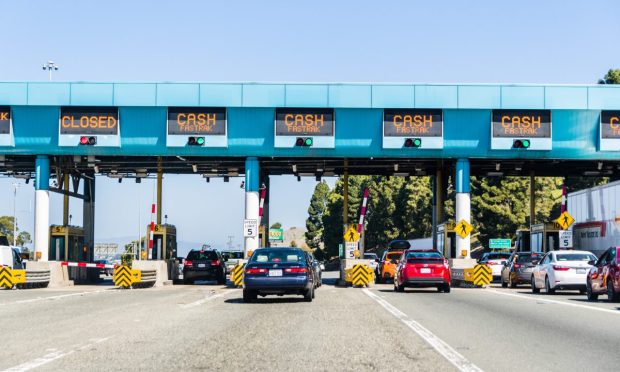When the Driver Doesn’t Own the Vehicle, Who Pays Tolls, Tickets?

A driver of a rental car gets a traffic violation via a closed-caption camera. A salesperson who uses a company car for both work and personal use drives it through an electronic toll off the clock.
These are instances in which the driver incurring the cost of the ticket doesn’t own the car. And if the owner of the vehicle doesn’t associate the cost with the driver and collect the payment from them, the company loses money.
This is a common occurrence because if those costs remain invisible to the rental car facility at the time the car is returned, the driver settles with them for only the costs that they know about.
“Before we were around, many of our customers just viewed this as a cost of doing business,” Steve Lalla, executive vice president of Verra Mobility’s commercial services business, told PYMNTS.
The Growing Costs of Not Settling With the End User
When most tolling was barrier based, this cost to rental car companies was pretty small. But with the emergence of electronic tolling, free-flow tolling and barrier-free tolling, the cost of not settling started to grow.
Verra Mobility’s commercial services business handles tolling and violations management by ingesting electronic data from tolling authorities, municipalities and the fleet operators’ enterprise resource planning (ERP) systems to associate the cost with the driver. For municipalities that don’t collect tolls or fines electronically, it receives and digitizes the paper bills.
The company has open accounts with the tolling authorities, which deduct the tolls from the accounts so that no further costs are incurred for the customer. If the customer wants to collect the cost from the end user, Verra Mobility then informs the user via email or phone to collect the cost or transfer the liability.
Demand for its services is growing. First-quarter revenue from the commercial services unit rose 61% year over year; compared to the pre-pandemic first quarter of 2019 when it was up 17%.
Changes in the Ways People Are Using Vehicles
Several trends have contributed to this growing demand, Lalla said. People are traveling more often, renting cars more often and keeping them longer.
“We have seen a change in the way people are using these mobile assets,” Lalla said. “They are using them for longer periods of time. A hypothesis would be some people might be choosing to drive instead of fly, whether it’s the cost of airlines, whether it’s the concern of COVID. It’s longer trips, more tolls per trip.”
In addition, some tolling authorities raised prices, especially when there was a decline in demand and they needed to continue to get revenue to maintain roads.
When these drivers incur costs, and the rental car facility isn’t notified quickly enough to add it to the bill, it’s important to act fast if they want to collect that cost, Lalla said.
“From the day a cost occurs, to the day they get billed for it, that delay creates uncertainty, creates confusion, because they don’t remember that they went through a toll,” Lalla said. “So, we know that reducing time lag is important.”
A Shift From ‘Own and Hold’ to ‘Reserve and Use’
Lalla said with the current trends, Verra Mobility expects the growing adoption of car sharing to boost demand for these services required when the driver is not the owner of the vehicle.
“We’re starting to see this trend over time where this concept of own and hold an asset is starting to give way to more of a reserve and use,” Lalla said. “In that model, this payment matching between the user and the cost incurred has some of the same similarities of problems as you see in today’s fleet and rental car markets — and we believe that’s going to become more prevalent over time.”
